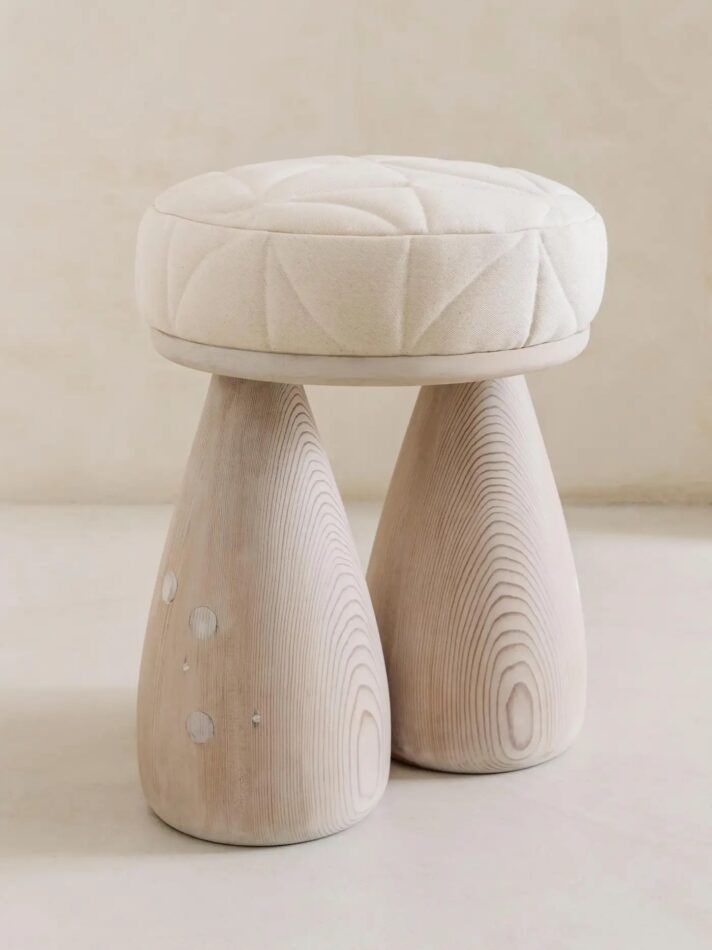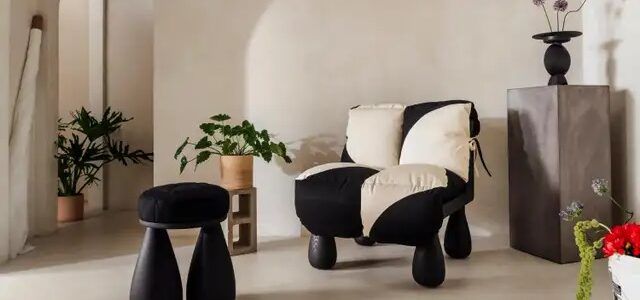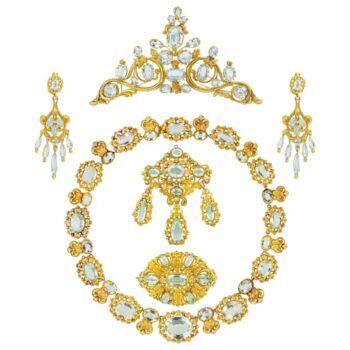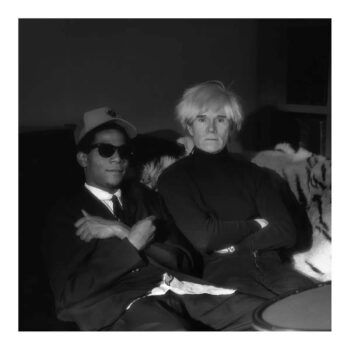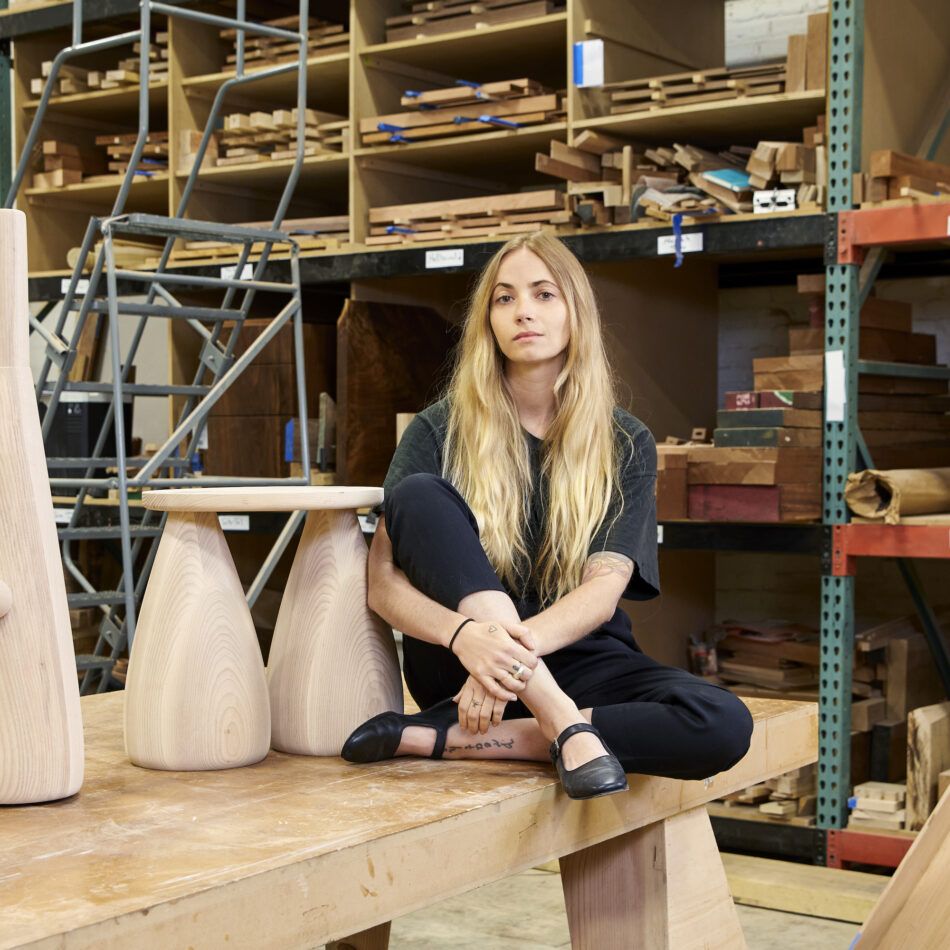
“This girl doesn’t sleep!” Sam Klemick says of herself, laughing. The Miami-born, Los Angeles–based woodworker and furniture designer runs a namesake studio that focuses on reimagining discarded materials. Oh, and she also has a full-time job designing knitwear for a major fashion brand.
One need only look at how she manipulates the upholstery on her Quilted stool — as well as her Nap chair and Wiggle bench — in a manner akin to draping fabric on a dress mannequin, to see how each interest feeds the other.
The stool, along with other works by Klemick and Canadian sculptor Jeff Martin, is on view at New York’s Objective Gallery through September 27 in “Please Sit for the Alternate Ending,” a show highlighting functional artworks crafted from reclaimed materials.
Klemick took up woodworking about six years ago as a hobby, studying at LA Woodshop, a cooperative workspace where she is now a member. “There’s a lot of waste in fashion in terms of materials, sampling and creative ideas because it is such a fast-paced business,” she explains. “I adore fashion, but I was craving a practice that involved making something slowly, mindfully and by hand and that allowed me to learn new processes.”
The designer quickly gravitated toward the turner’s lathe. “The lathe allows more freedom than traditional woodworking, where right-angled joints must precisely fit together. It’s about being okay with imperfection, which is reflective of my style,” Klemick says.
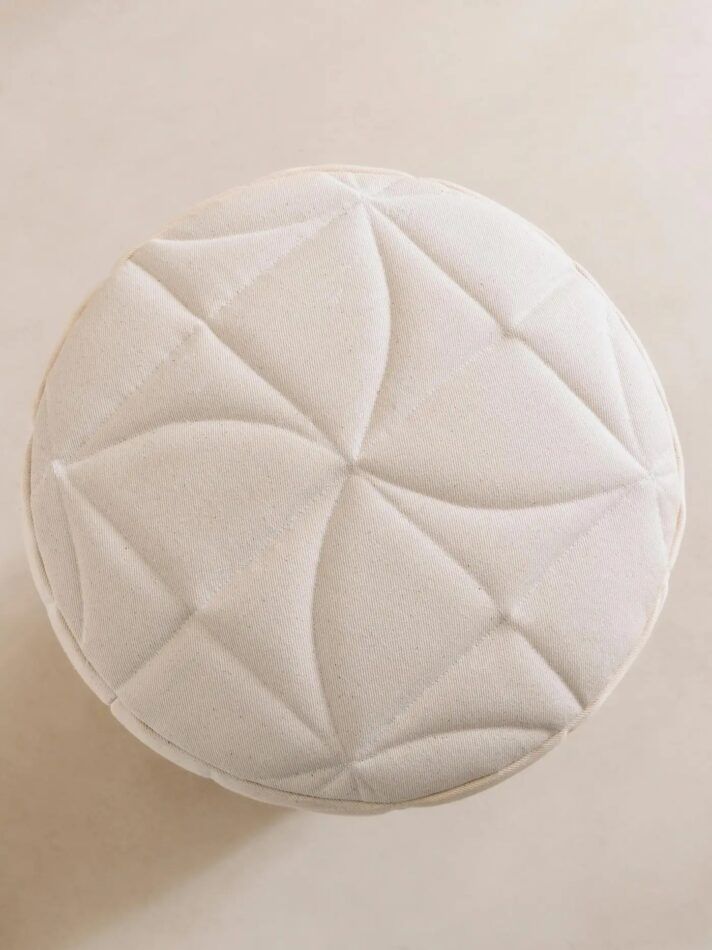
Her anthropomorphic Quilted stool features a pair of jaunty, smooth-hewn legs that flare out like a pair of bell-bottom pants and a lofty, geometrically patterned seat. (The Bell side table, a taller version of the design, comes without the cushion.)
Klemick’s commitment to circular production means that she constructs almost exclusively with upcycled materials, including deadstock canvas for the upholstery — in neutral shades of beige, brown or black — and old-growth Douglas fir salvaged from construction sites, which she stains in a variety of shades.
“I have my own metal detector,” Klemick says, “and I will spend hours going through the lumber to make sure there are no nails or screws that could break the machinery if unchecked.” The round dowels seen on the leg of the Quilted stool, for example, aren’t just decorative; they mask the sites of former nail holes.
